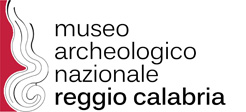The National Archaeological Museum of Reggio Calabria was recognized as among the most prestigious archaeological museums in Italy when it was made autonomous by the MiBACT 2014 reform.
The building that houses it is one of the first in Italy to be designed with the exclusive purpose of a museum. Marcello Piacentini, one of the leading exponents of the early twentieth century, conceived of the museum to have a modern style of exhibition, after he visited the main museums in Europe. Located in the heart of the city, the museum is an important element of the landscape and the life of all Calabria. Located next to De Nava Square in the center of the city, the southern façade faces the shore, with its splendid views of the Strait of Messina.
The National Archaeological Museum was born from the merger of the State Museum with the Museum of Reggio Calabria. The latter was inaugurated on June 18th, 1882, to guard the numerous archaeological remains of the area. Its headquarters were initially in the facilities of the Municipal Library, but with the increase of the collections, between 1887 and 1889, it was moved to a building located next to the Roman baths, recently discovered at that time. During the 1908 earthquake, the Museum building was severely damaged. This accelerated the process of establishing a national archaeological museum, strongly supported by Paolo Orsi, among others, who in 1907 was named the first superintendent of the excavation in Calabria. On May 22nd, 1948, an agreement was signed between the City Council of Reggio Calabria and the General Directorate of Antiquities of the then Ministry of Education. After acquiring these collections from the civic museum, the latter was closed.


















